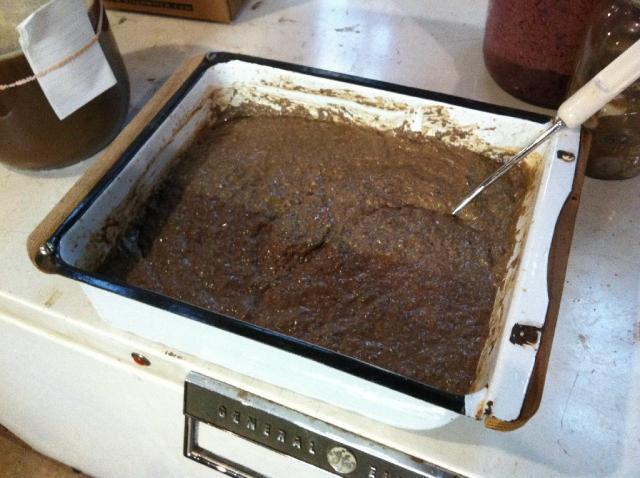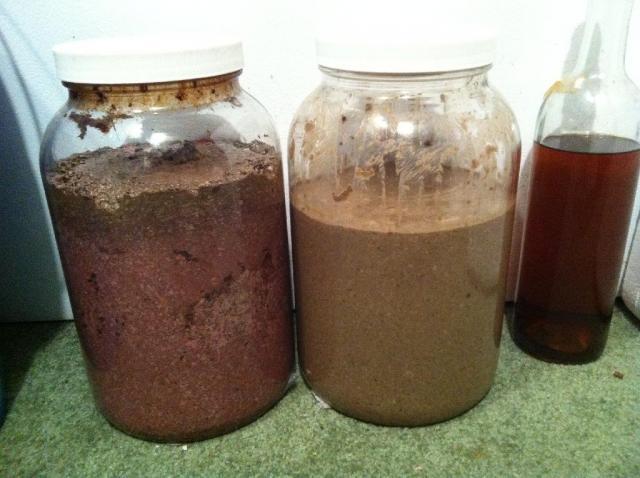Glands are collected after the animal has been pelted and while it is hanging vertically by the rear feet.
ANAL GLANDS:
When skinning, make a semi-circular cut around the vent of the animal so that there is only ¼” of fur (preferably less) around the edge of the vent. When making the cut, it is extremely important to angle the point of the blade away from the center of the vent. This will ensure that the scent glands remain attached to the underside of the vent and are not punctured or damaged. Once skinning is complete, a cut should be made between the vent and the testes (vagina on a female) and the vent and attached glands can be pulled away from the carcass exposing some of the intestine. The pair of pea sized scent glands are located on either side of the vent, and are sometimes bluish in color. At this point, one can use a sharp blade and trim the excess skin and fur from the vent if desired. Next, cut the intestine to the desired length. Some lure makers want the intestine as short as possible so that there is very little attached to the vent. Others may prefer 4-6” of intestine to remain attached. Be sure that the short piece of intestine connected to the vent contains no feces.
What the vent area should look like after skinning.
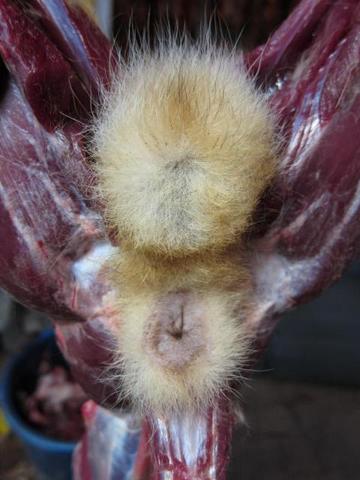
The pair of anal glands can be seen on the underside of the vent.
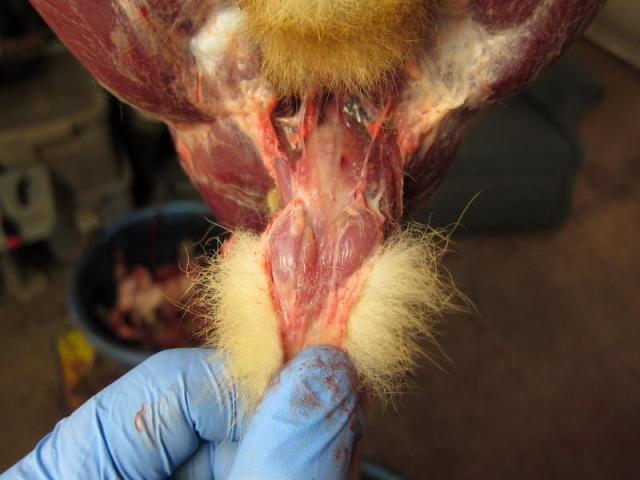
Anal rim trimmed of excess hair.
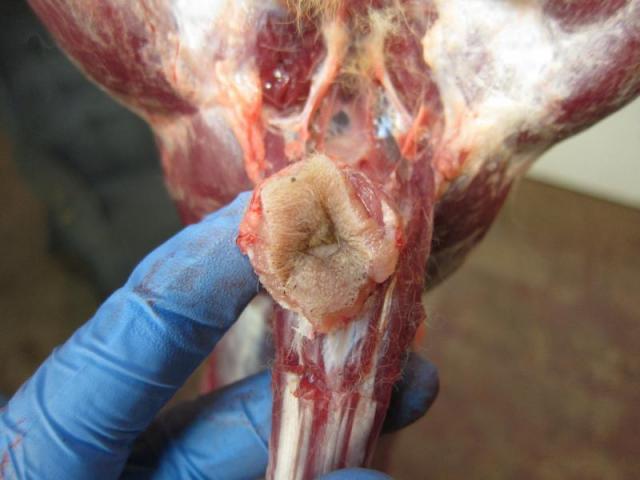
HOCK GLANDS:
The hock glands are found on the back side of each rear leg. It is located between two muscles behind the knee area. The gland is small (about the size of a pea) and is usually surrounded by fat. Spread the muscles to expose the gland and cut it and the surrounding fat free.
Hock gland location on the rear legs.
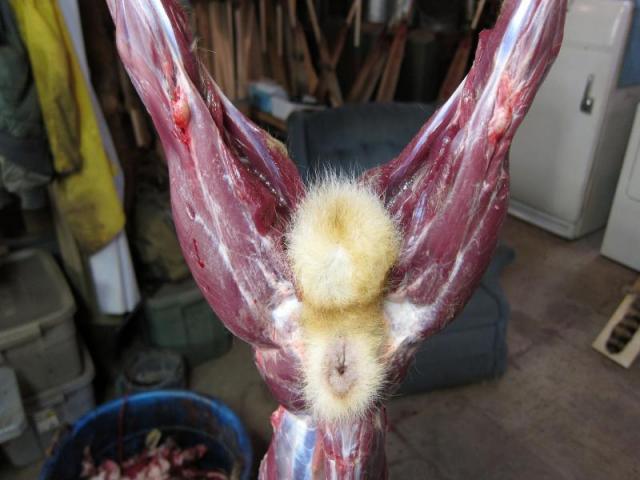
Pointing out both hock glands.

Closeup of a hock gland.
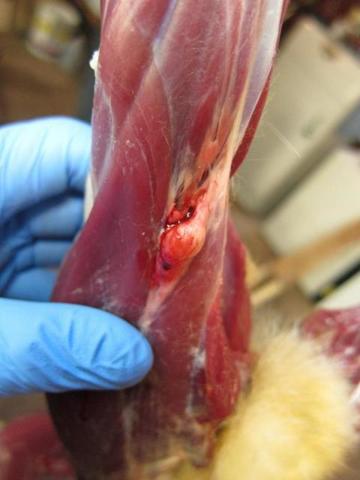
BLADDER:
The bladder is removed by making a vertical incision about 4 inches long in the center of the belly near the point where the abdomen and back legs meet. Make the cut shallow so the bladder is not punctured. Pull the bladder out, pinch it off near the top, and cut it free. Drain any urine into a separate glass jar and add the empty bladder to the gland jar. The bladder urine can be used on the trapline or later utilized as a component when formulating gland lure.
Incision in the abdomen.
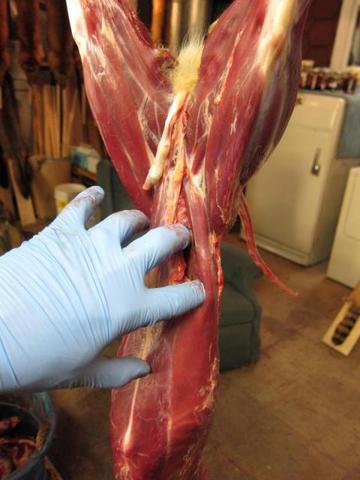
Empty bladder.
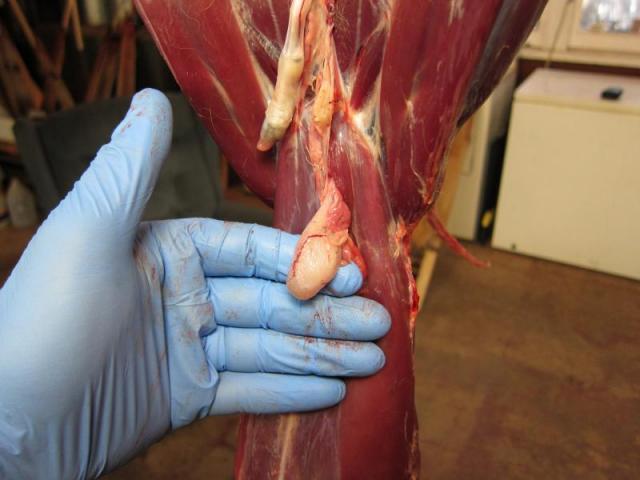
TESTES:
Make a cut in the scrotum near the base of the penis and squeeze the testes out of the scrotum.
VAGINA:
Pull on the vaginal opening and surrounding fur while using a knife to make shallow cuts around the base of the vagina. Once the base of the vagina is free from the carcass and an inch or two of the reproductive tract and urethra is showing, cut the fur from the vagina and discard. Next, pull the vagina and reproductive tract free from the cavity.
Pair of testes squeezed from the scrotum.
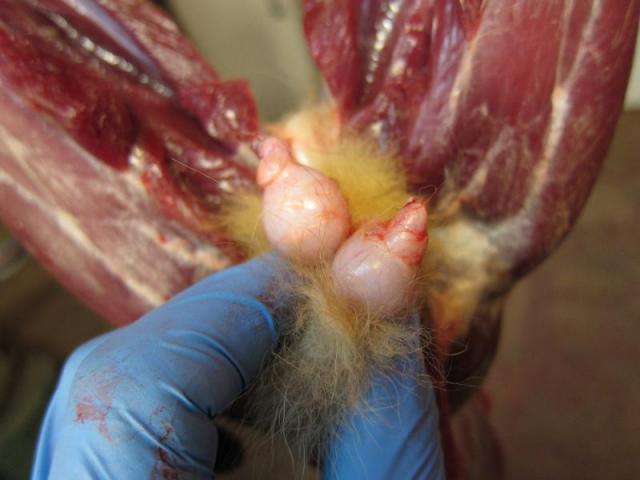
NECK GLANDS:
The pair of neck glands are found at the throat area of the animal near the point where the neck meets the front legs. These glands are very small, and often hidden inside a layer of fat. Pinch each gland between your thumb and forefinger and cut free from the carcass. Sometimes, the neck glands stay attached to the pelt during the skinning process and can be collected when the pelt is fleshed.
Neck gland location.
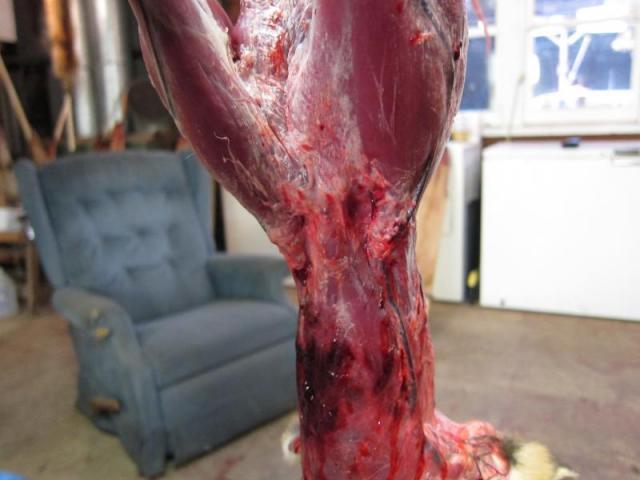
Pointing out each neck gland.
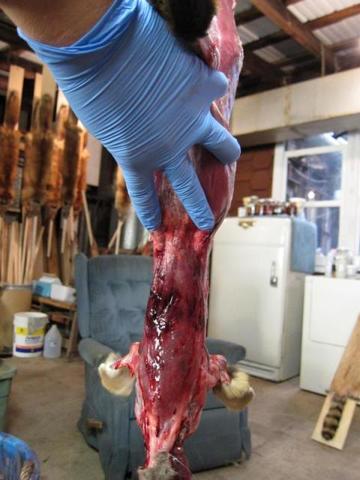
SHOULDER GLANDS:
The shoulder glands are located at the top of each front shoulder blade toward the front. The gland is under a layer of muscle and is about the size of a lima bean. Locate the gland and pinch it between your thumb and forefinger and make a two inch incision in the muscle beside the gland near the shoulder blade. Pull the muscle away to expose the gland and cut it free.
Location of shoulder gland.
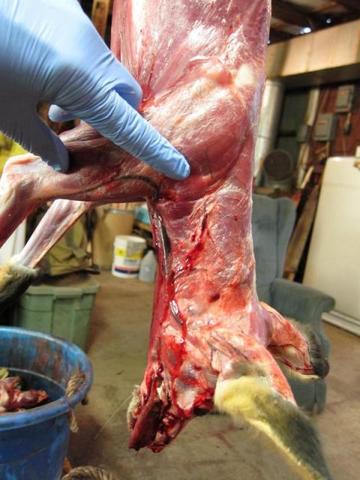
Cut made to expose shoulder gland.
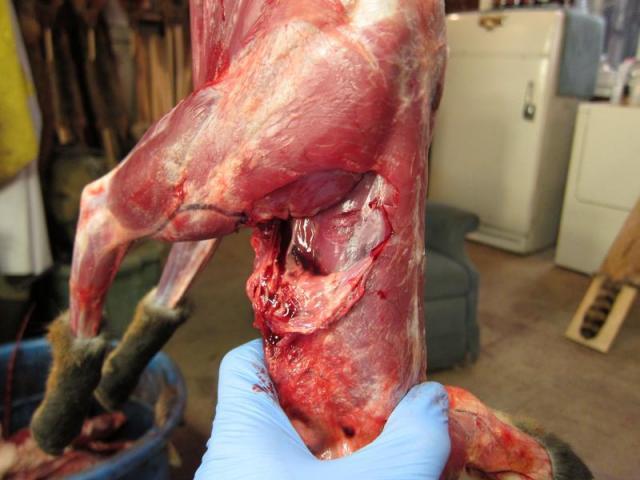
Shoulder gland closeup.

Both shoulder glands removed.
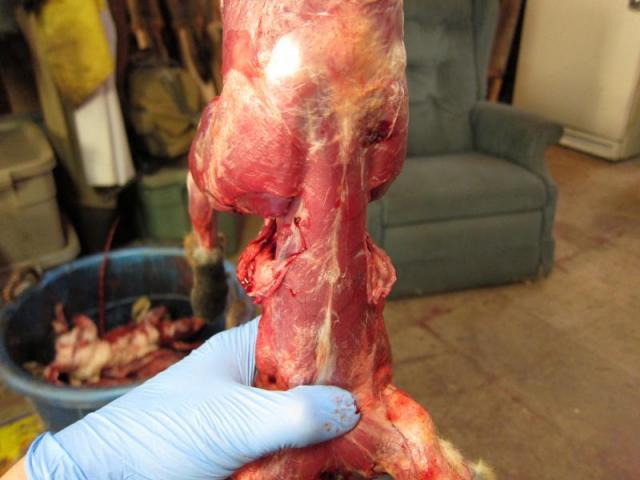
GALL BLADDER:
Continue the incision into the gut cavity from where the bladder was removed all the way down to the breastbone. Locate the liver and attached to it is a greenish sac which is the gall bladder. Use a syringe and extract as much of the liquid bile from the gall bladder as possible.
Incision made to access internal organs.
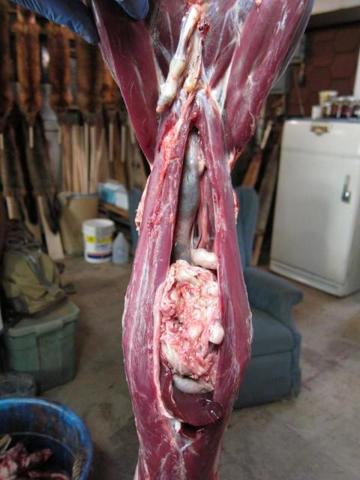
Gallbladder location.
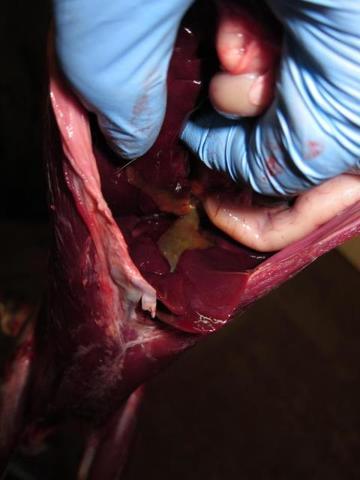
Syringe with bile.
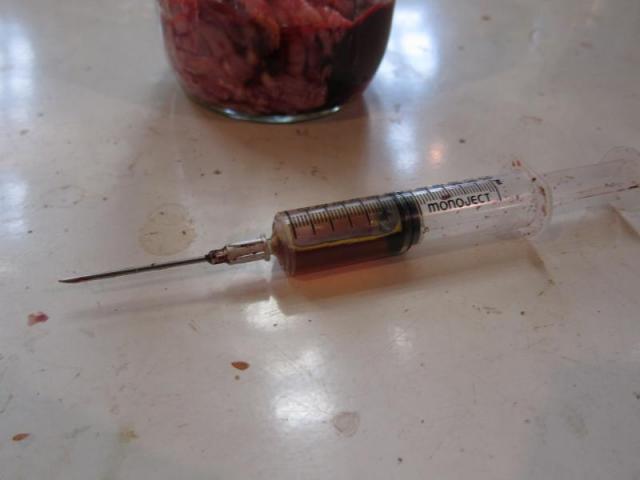
LIVER:
Some trappers prefer some percentage of liver in the mix as it does possess a similar odor of the animal it is collected from. The decision to add liver and at what ratio is entirely up to the trapper or lure maker. I prefer to add one whole liver for every 30 animals I collect the glands from.
KIDNEYS:
Kidneys are essentially filler in a gland lure. In my opinion, the addition of too many kidneys changes the odor of the lure quite drastically. Because of this, I only add 2 kidneys to the glands of every 30 animals.
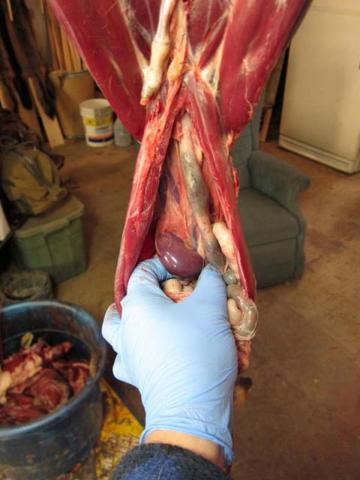
BRAINS:
Many old time gland lure formulas contained brains from a fox or coyote. Brain material contains quite a bit of fat, and if nothing else it will help to increase the ability of the gland lure formula to hold up in wet weather. To remove the brain from a fox or coyote, lay the head on a hard surface with the top of the skull facing upward. Use a hatchet to make a cut near the eyes and another at the back of the skull near the ears. These two cuts should be perpendicular to the snout. Then make a third cut in the middle of the skull (parallel to the snout) which connects the other two cuts. When finished, the cuts should form the shape of an “I”. Pry the top of the skull open like a set of double doors, and scoop the brain out with your fingers. The amount of brain material added to the gland mix is up to the preference of the individual. I personally add 4 brains to the glands from every 30 animals processed.

FOOT PADS:
Some prefer to add the foot pads from the fox to the gland mix as well.
Store glands in a clean glass jar and leave room for expansion. This jar is too full if it would be stored in a warm place.
[img:gal:27046545123d887ab6]http://www.trapperman.com/forum/attachments/usergals/2014/10/full-27046-239332-img_4288_zps69b5e797.jpg[/img]
I hope this works and everything is in the right order
























![[Linked Image]](http://www.trapperman.com/forumpics/USAflag1.gif)
